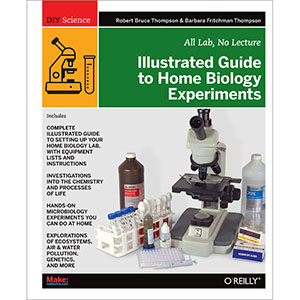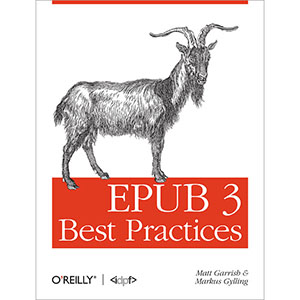Illustrated Guide to Home Biology Experiments

Experience the magic of biology in your own home lab. This hands-on introduction includes more than 30 educational (and fun) experiments that help you explore this fascinating field on your own. Perfect for middle- and high-school students and DIY enthusiasts, this full-color guide teaches you the basics of biology lab work and shows you how to set up a safe lab at home.
The Illustrated Guide to Home Biology Experiments is also written with the needs of homeschoolers firmly in mind, as well as adults who are eager to explore the science of nature as a life-long hobby. To get the most from the experiments, we recommend using this guide in conjunction with a standard biology text, such as the freely downloadable CK-12 Biology (ck-12.org).
- Master the use of the microscope, including sectioning and staining
- Build and observe microcosms, soda-bottle worlds of pond life
- Investigate the chemistry of life from simple acids, bases, and buffers to complex carbohydrates, proteins, lipids, enzymes, and DNA
- Extract, isolate, and observe DNA
- Explore photosynthesis, osmosis, nitrogen fixation, and other life processes
- Investigate the cell cycle (mitosis and cytokinesis)
- Observe populations and ecosystems, and perform air and water pollution tests
- Investigate genetics and inheritance
- Do hands-on microbiology, from simple culturing to micro-evolution of bacteria by forced selection
- Gain hands-on lab experience to prepare for the AP Biology exam
Through their company, The Home Scientist, LLC (thehomescientist.com/biology), the authors also offer inexpensive custom kits that provide specialized equipment and supplies you’ll need to complete the experiments. Add a microscope and some common household items and you’re good to go.
Table of Contents
Chapter 1. Introduction
Chapter 2. Equipping a Home Biology Laboratory
Chapter 3. Laboratory Safety
Chapter 4. Using a Microscope
Chapter 5. Mounting Specimens
Chapter 6. Staining
Chapter 7. Building and Observing Microcosms
Chapter 8. Observing Succession in Aquarium Microcosms
Chapter 9. Observing the Effects of Pollution in Microcosms
Chapter 10. Acids, Bases, and Buffers
Chapter 11. Carbohydrates and Lipids
Chapter 12. Proteins, Enzymes, and Vitamins
Chapter 13. Coacervates
Chapter 14. Extracting, Isolating, and Visualizing DNA
Chapter 15. Build a Gel Electrophoresis Apparatus
Chapter 16. Simulated DNA Separation by Gel Electrophoresis
Chapter 17. Chlorophyll and Photosynthesis
Chapter 18. Investigating Osmosis
Chapter 19. Investigating Cell Division
Chapter 20. Sampling Plant Populations in a Community
Chapter 21. Observing the Effect of Rhizobia on Plant Growth
Chapter 22. Air Pollution Testing
Chapter 23. Soil and Water Pollution Testing
Chapter 24. Exploring Mendelian Genetics
Chapter 25. Observing Specialized Eukaryotic Cells
Chapter 26. Preparing Culturing Media
Chapter 27. Culturing Bacteria
Chapter 28. Investigating Bacterial Antibiotic Sensitivity
Chapter 29. Investigating Protista
Chapter 30. Investigating Fungi
Chapter 31. Investigating Simple Plants: Mosses and Ferns
Chapter 32. Investigating Seed Plants
Chapter 33. Investigating Porifera and Cnidaria
Chapter 34. Investigating Platyhelminthes, Nematoda, and Annelida
Chapter 35. Investigating Arthropods
Chapter 36. Investigating Vertebrate Tissues
Book Details
- Paperback: 384 pages
- Publisher: O’Reilly Media / Make (April 2012)
- Language: English
- ISBN-10: 1449396593
- ISBN-13: 978-1449396596














